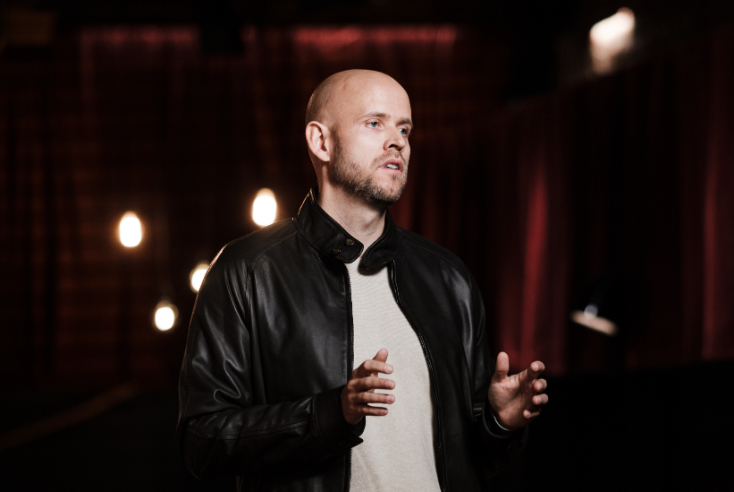Spotify registered its best ever quarter for monthly active user (MAUs) growth in its history, with net additions of 36 million to 551 million, 21 million ahead of guidance.
The number of ad-supported MAUs increased from 317 million to 343 million (34%) in the quarter.
Its subscriber growth also outperformed guidance by 3 million, growing by 10 million over the last quarter to hit 220 million.
The streaming service’s total Q2 revenue growth of 11% to €3.2bn was in line with guidance. Within this Premium tier revenues contributed the majority and grew 11% from quarter-on-quarter from €2.71bn to €2.73, while ad-supported tier revenues grew by 12% quarter-on-quarter from €329m to €404m.
On the ad-supported side, Spotify said the second quarter represented double-digit year-on-year growth across nearly all regions. However, both music and podcast advertising revenue and the Spotify Audience Network (SPAN) were “partially offset due to softer pricing”, despite music and podcasts registering double-digit year-on-year growth in impressions sold or SPAN the same in participating advertisers and publishers, and single-digit growth in participating shows.
In its earnings call, many of the questions from investors and reporters focussed on Spotify’s recent price increase, its podcast and AI strategy, and the impact of a softer advertising market.
Yesterday the on-demand music streaming platform announced its largest ever price increase for Premium subscribers, which was the first time for some markets like the US. This was across its individual, duo, family and student offerings.
Daniel Ek, founder and CEO of Spotify, repeatedly referred to these price increases as “an important part of the toolbox”. He said in the past Spotify had increased prices across more than 50 markets and decided this was the right time to do so for markets including the US and the UK.
Ek stressed that in the past pricing changes have not affected user growth in these other markets, while Paul Vogel, chief financial officer at Spotify, acknowledged that while the price increases will not take effect until September, there was “conservatism baked in” to Q3 expectations.
Vogel and Ek referred numerous times throughout the call to “progress on efficiency”, streamlining and cutting costs in the company. Vogel confirmed that the streaming service expected its headcount to go down in Q3, as they continued to looked at efficiency, innovation and launching new products.
On the podcast front, Ek said that its strategy had changed since the streaming service now has data to back up and “streamline” its podcast decisions, which it did not have four years ago. For instance, it will “right size” or “double down” on podcasts performing well, and “step away” from those that are not.
While it will capitalise on the increasing number of non-audio first creators getting into podcasts, and expand into long-form content, he emphasised podcasts “have to be efficient” as he acknowledged they had overpaid for some in the past.
He expected this strategy would “create a brand halo” on to its music service and reach younger consumers. Ek also said that while podcast was still growing and at an early stage, audiobooks were “even more nascent” and in the long-term will be a major investment opportunity.
When asked about slightly declining music advertising revenues, Vogel said that the company had seen “good trends in advertising overall” with podcast advertising performing better throughout the quarter, with the last month of the quarter being its best in terms of year-over-year growth.
On the AI side of things, Ek saw these in three main applications that could help consumers, and also drive Spotify’s value. First, core machine learning improvements in discovery, second, generative AI which can improve the ability to contextualise and personalise content (like its product AI DJ), and finally, AI that makes a company more efficient for instance through reducing the cost of audio ad production for advertisers.
To end the call, Ek was asked about factors other than a “soft ad market”, ad product or “advertiser willingness to embrace audio” that was “dampening advertising growth”. He said there were two factors; namely developing markets lagging behind the US in terms of strength of advertising, and a delay in advertisers catching up with user growth.
“Pretty much all social media platforms follow this similar trend, which is when you have a reacceleration of growth or very fast, rapid growth, it usually takes a few quarters before the market catches up. So it is not one to one – when you see a user you cannot instantly start monetizing that user,” he explained.
“It usually takes a few quarters before you can do that, and I think you can see that very clearly when you go back and look at some of the other players in the space as well. I think over time, it will start catching up here too, but it’s more of a lag than anything else.”
Adwanted UK are the audio experts operating at the centre of audio trading, distribution and analytic processing. Contact us for
more information on J-ET, Audiotrack or our RAJAR data engine. To access our audio industry directory, visit
audioscape.info and to find your new job in audio visit
The Media Leader Jobs, a dedicated marketplace for media, advertising and adtech roles.




